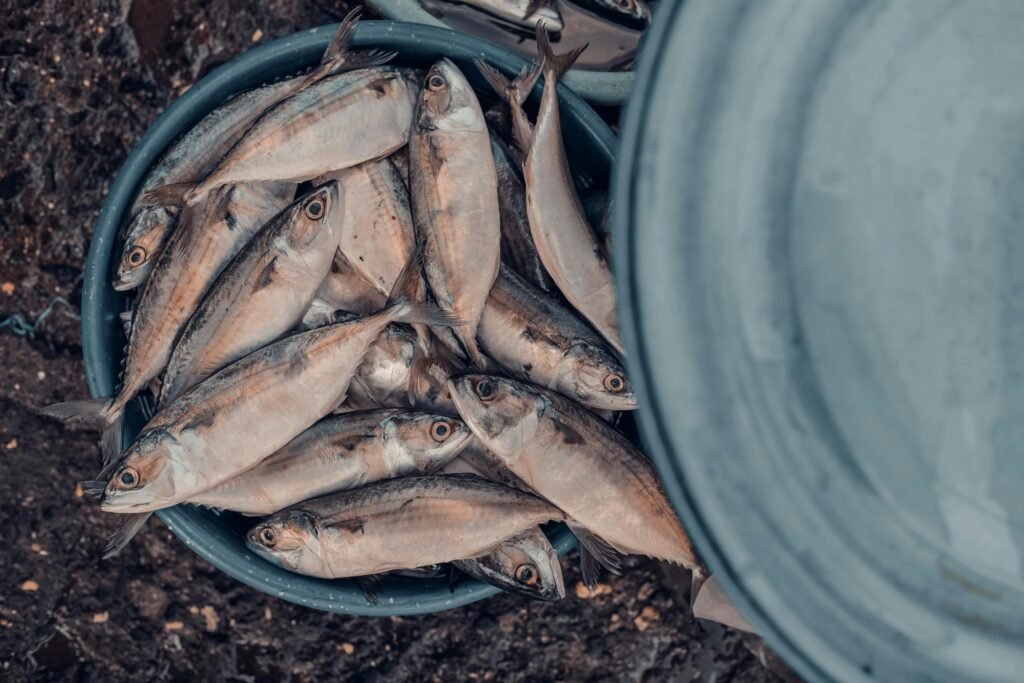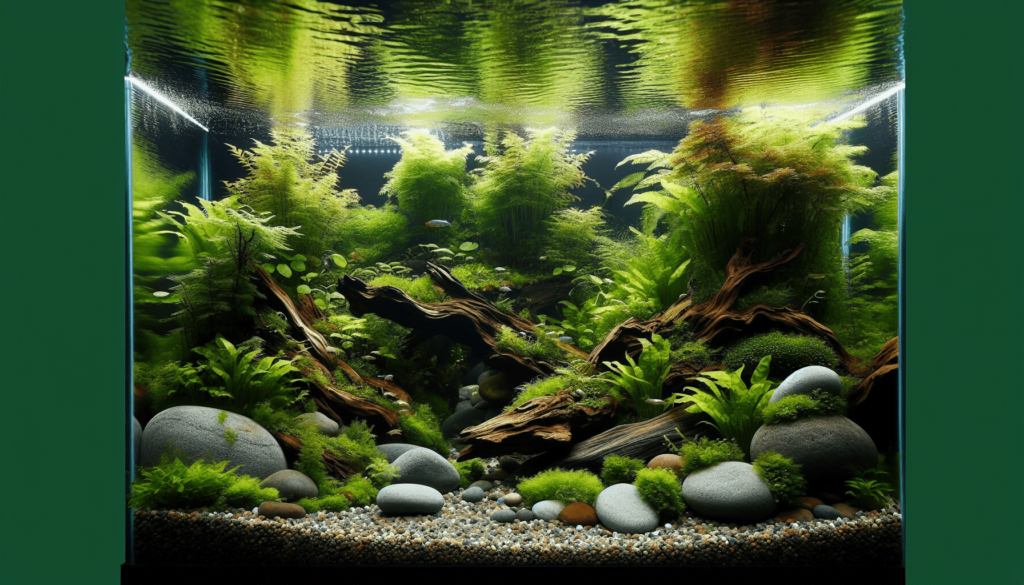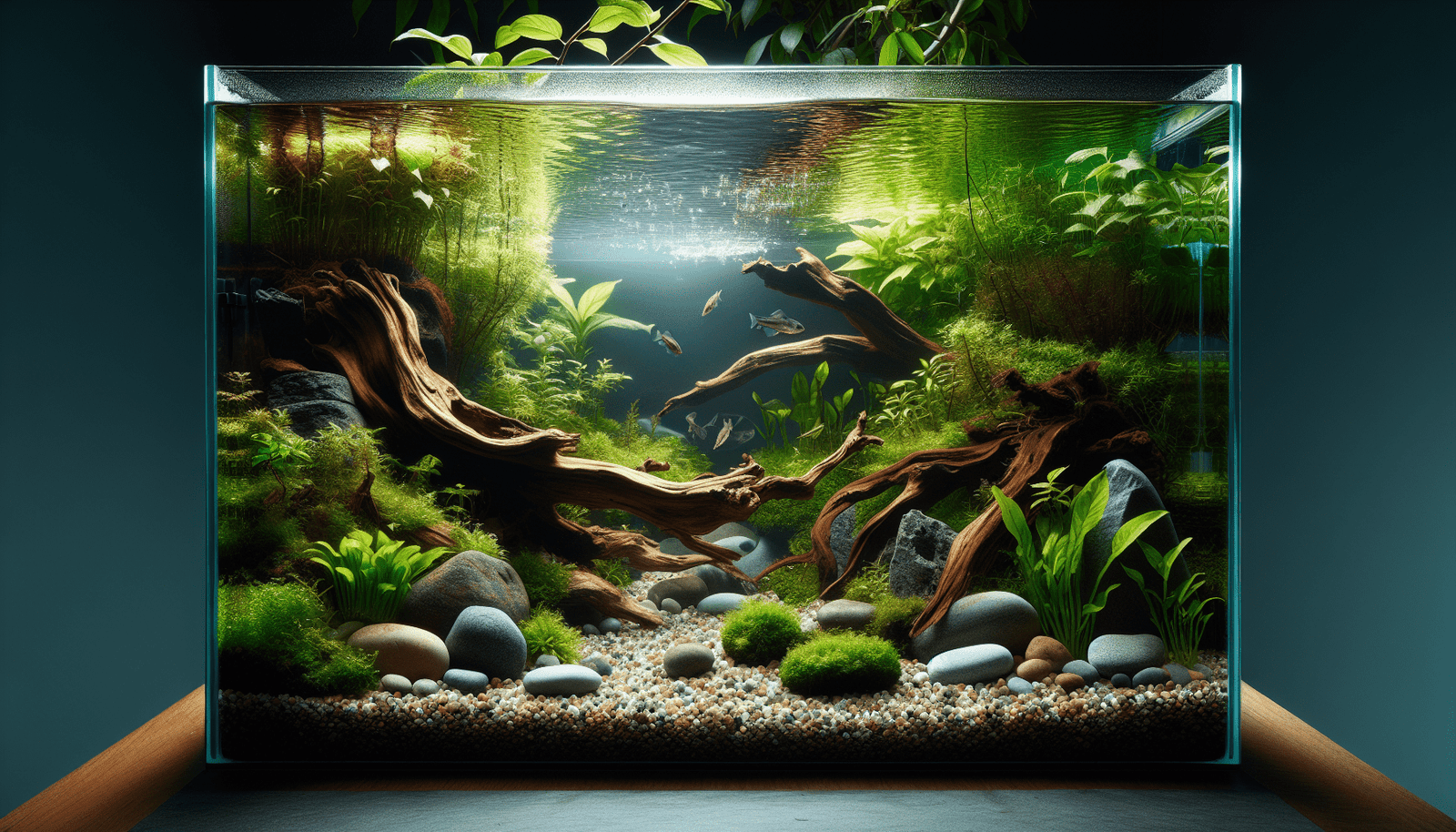Imagine a tiny world under the surface of the water, full of green plants, colorful fish, and pebbles arranged just right. This is what Japanese aquascaping is all about. In this peaceful hobby, you create a small, beautiful ecosystem inside an aquarium. It’s like painting a picture, but instead of using colors on canvas, you use plants, rocks, and water to make something wonderful to look at. This art form started in Japan and has grown more popular all over the world because it helps people feel calm and happy. With your own miniature underwater garden, you can have a piece of nature right in your home. Have you ever wondered how to create a miniature underwater world that looks like a dream? Imagine having a small piece of nature’s beauty right in your own home! Let’s dive into the fascinating world of Japanese aquascaping, where we combine art and science to make tiny, tranquil ecosystems.
Overview
Japanese aquascaping is all about creating beautiful, natural-looking underwater landscapes within an aquarium. It’s like having your own underwater garden where fish can swim and plants can grow. This art form is not just about keeping fish; it’s about creating a balanced and stunning ecosystem that brings peace and joy to whoever gazes upon it.
Historical Context
Aquascaping originated in Japan and has a rich history dating back to the late 20th century. It was popularized by Takashi Amano, a famous Japanese aquarist, photographer, and landscaper. Amano’s work focused on recreating nature’s beauty using rocks, driftwood, plants, and fish, which made the aquariums he designed look like miniature pieces of nature. His style was called the “Nature Aquarium,” and it has inspired many people around the world to try aquascaping.
Current Trends
Nowadays, aquascaping is very popular all over the world. People compete in aquascaping contests, sharing their designs online and in magazines. New trends include using high-tech equipment like LED lighting and CO2 systems to help plants grow better. There are also styles like the Iwagumi (rock garden) and Dutch style (lush plant garden), each with their own unique looks and challenges.
Key Concepts and Definitions
Before we go deeper, let’s define some important terms related to Japanese aquascaping:
- Aquarium: A glass or acrylic tank where fish, plants, and other aquatic life are kept.
- Substrate: The material (like sand or gravel) that lines the bottom of the aquarium.
- Hardscape: The non-living elements in the tank, such as rocks and driftwood.
- Flora: Plants in the aquarium.
- Fauna: Fish and other animals in the aquarium.
- CO2 System: Equipment used to add carbon dioxide to the water to help plants grow.
- Filtration System: Equipment that cleans the water in the aquarium.

The Art of Japanese Aquascaping
Designing Your Aquascape
Designing a Japanese aquascape involves a lot of planning and imagination. You begin by deciding what kind of landscape you want to create – a lush forest, a rocky mountain, or maybe a grassy meadow under water.
- Choosing the Right Tank: Start by picking a good-quality aquarium that fits your space. For beginners, a medium-sized tank (around 20 gallons) is a good choice.
- Building the Hardscape: Arrange your rocks and driftwood first. Think about how water and plants would look in nature. Large stones can look like mountains and driftwood can look like fallen trees.
- Planting the Flora: Pick plants that will thrive in your aquarium. Some popular ones include Java Moss, Anubias, and Dwarf Hairgrass. Plant taller plants in the back and shorter ones in the front to create depth.
- Adding the Fauna: Finally, choose fish that will live happily in your aquascape. Neon Tetras, Betta Fish, and Shrimp are popular choices.
Example 1: Nature Aquarium
Amano’s Nature Aquarium style is one of the most popular forms of aquascaping. In this style, the goal is to create a tranquil, natural-looking environment where plants and fish live in harmony.
Planning Your Nature Aquarium
- Tank Setup: Start with a clean tank.
- Substrate: Use nutrient-rich substrate to help plants grow.
- Hardscape: Arrange rocks and driftwood in a natural-looking way.
- Planting: Use a variety of plants to create a lush, green environment.
- Fauna: Choose peaceful fish like Tetras or Rasboras.
Maintenance
Keep the water clean with a good filtration system, and regularly prune the plants to keep them healthy and beautiful.
Example 2: Iwagumi Style
The Iwagumi style is inspired by Japanese rock gardens. It’s simple but very striking, using only a few types of plants and focusing on the arrangement of rocks.
Planning Your Iwagumi Aquascape
- Tank Setup: Choose a longer tank to create a panoramic view.
- Substrate: Use a light-colored substrate to highlight the rocks.
- Hardscape: Arrange rocks in odd numbers, usually three or five, with one large “master” rock.
- Planting: Use a carpet plant like Glossostigma or Dwarf Hairgrass that stays low and lets the rocks stand out.
- Fauna: Choose small fish like Neon Tetras that don’t distract from the simplicity.
Maintenance
Keep the water conditions stable and trim the carpet plants regularly so they don’t overgrow the rocks.
Comparison of Different Perspectives
Different styles of aquascaping focus on different elements. The Nature Aquarium style emphasizes lush plant growth and a balanced ecosystem, while the Iwagumi style focuses on simplicity and rock placement. Both styles have their own beauty and challenges, and the best choice depends on what kind of underwater world you want to create.
Impact Assessment
Creating and maintaining an aquascape can have many positive effects. It’s a relaxing hobby that can reduce stress and bring a sense of accomplishment. Watching fish swim in a beautifully designed tank can also improve mood and well-being. However, it requires time and patience to create a thriving aquascape, and there’s a learning curve involved in balancing the ecosystem.

Future Directions and Implications
Predictions
As technology continues to advance, we can expect to see more high-tech aquascaping tools and equipment that make it easier to create and maintain these mini-ecosystems. Smart tanks with automated systems for lighting, feeding, and water quality may become more common, allowing even beginners to create stunning aquascapes.
Implications
Aquascaping can teach us a lot about nature, patience, and creativity. By creating a small ecosystem, we learn about the balance that exists in the natural world and the importance of maintaining it. This can inspire greater appreciation for the environment and promote sustainability.
Conclusion
Recap
Japanese aquascaping is a beautiful and relaxing way to bring a piece of nature into your home. From its historical roots with Takashi Amano to the various styles like Nature Aquarium and Iwagumi, this art form combines creativity and science to create stunning underwater landscapes.
Final Thought
Imagine gazing into your aquarium and seeing a vibrant, tranquil world that you created. It’s like having a tiny piece of nature’s magic right in your living room. So, why not give Japanese aquascaping a try and see the joy and tranquility it can bring into your life?
Engagement
Have any questions or need some tips to get started? Feel free to comment below and share your thoughts or experiences with aquascaping. Let’s create some beautiful underwater worlds together!
Credible Sources
- Amano, Takashi. “Nature Aquarium World.” TFH Publications, 2001.
- Kasselmann, Christel. “Aquarium Plants.” Krieger Publishing Company, 2003.
- “International Aquatic Plants Layout Contest (IAPLC).” IAPLC Website.
- “Aquascaping Love’s Blog.” Aquascaping Love Website.
Now that you know all about the art of Japanese aquascaping, it’s time to let your creativity flow and build your own peaceful underwater paradise!




